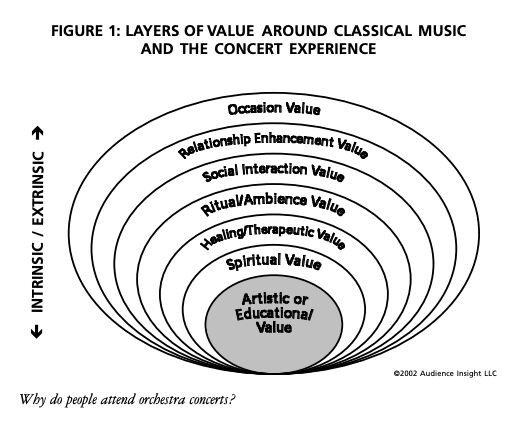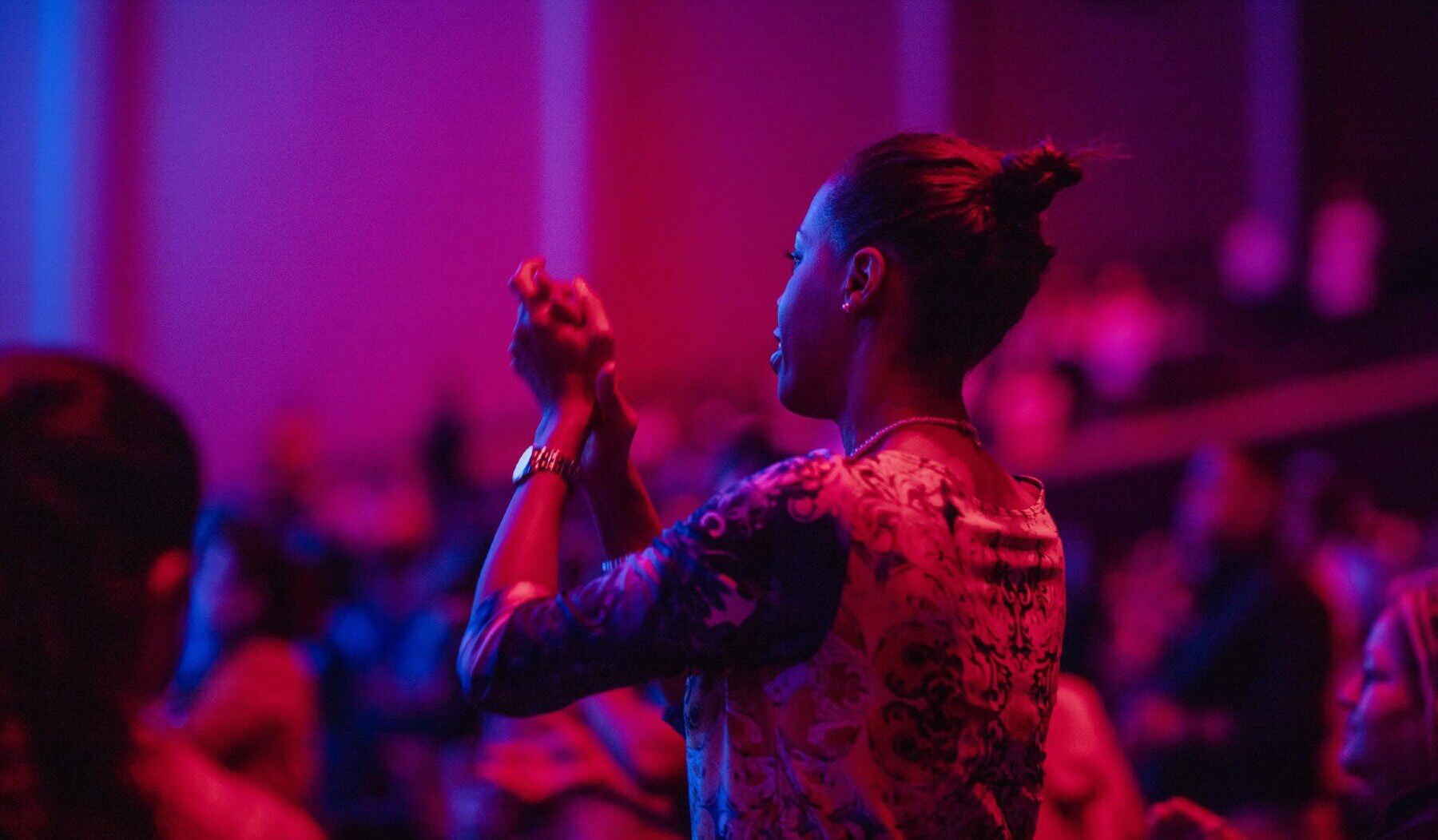“It’s Not About You” isn’t the most inviting title for an article, but if you’re tired of not having enough demand for your programs, low volume of ticket sales, and a high rate of audience churn, you’ll want to keep reading. Grab the nearest marketing material for your organization that’s laying around wherever you are reading this and see if what follows describes what you see.
In the arts, we often find a resistance to conceptualizing the art we produce merely as a product that serves a need in the marketplace, as if a performance is the natural answer to a single problem the way a toaster or a bicycle is. Nowhere is that resistance more observable than in the way that we create our marketing materials. We talk about our institutions and our work, highlighting the smart, interesting and talented creatives in our artistic department and how impressive you’ll find our performers. Sometimes we might even dip into marketing art on the merits of art in general, asking audiences to come because, well, they should want to, its art. The problem is that none of this has anything to do with our patrons or recognizes the values that they are seeking when they buy a ticket.
Two decades ago, in 2001, the Knight Foundation contracted with Audience Insight to produce a unique study called Classical Music Consumer Segmentation: How Americans Relate to Classical Music and Their Local Orchestras. More than 11,300 random sample telephone interviews were fielded in 15 markets corresponding to the areas served by the 15 orchestras. In addition, 1,500 orchestra ticket buyers were surveyed by mail in each market yielding just over 10,000 responses. At the end of the two-year study, the 15 orchestras were able to compare national results, market-area results and results from their own ticket buyers. The fundamental findings of that study seem no less true now, even across other genres of performance art. The study found that there are “layers of value” for patrons in experiencing a classical music concert ranging from extrinsic to intrinsic. Below are brief reflections on the values ticket buyers cited in the study:

Occasional Value- Your venue can be an appropriate place of celebration for your patrons. A birthday, anniversary, promotion, or any other celebratory occasion. Special occasions that call for “going out” are important to recognize as a patron value in your offers and marketing because our sector is facing stiff competition from the on-demand entertainment that your potential patrons can find simply by staying at home on the couch. Framing an invitation that suggests your upcoming program as a worthy way to celebrate a special occasion is a marketing tactic that speaks to a patron need.
Relationship Enhancement Value- In a similar way, your programs provide a wonderful place for patrons to nurture or sustain their personal relationships. Busy couples or parents feeling more like roommates than romantic partners are in the market for destinations to reconnect. This is another need your programs can meet in a way that staying at home can’t. Invitations that focus on reconnection speak directly to this need many of your patrons have.
Social Interaction Value- The desire for connection may not be focused on a particular person but more generally to connect with people with similar interests. Inviting patrons to attend mixers or membership galas in a way that puts the focus on connecting arts patrons with each other rather than just connecting them with your institution is another attractive invitation strategy to consider. Showcasing through your marketing images patrons gathering socially at your bar for example also speaks to this patron value.
Ritual or Tradition Value- Sometimes a particular show or experience becomes something of a ritual or tradition for families. For example, parents who saw The Nutcracker as a child might want their children to experience that same magic. Marketing in a way that reminds of or acknowledges traditions like these is perhaps the deepest of the extrinsic values.
Healing or Spiritual Value- At the layer of healing or therapy value we begin to find an intrinsic value of the art you are producing that customers are seeking. In the study’s focus groups, classical music concert goers spoke about enjoying closing their eyes and having therapeutic or transformational moments. While these may be personal experiences that are hard to promise in any kind of marketing, understanding that the experience of your art can impact people deeply is one way in which to set your invitations around the intrinsic value of art while keeping your message aligned with a deep patron value.
Artistic or Educational Value – The deepest intrinsic value cited in the study is artistic or educational value, art for its own sake. Patrons with this value will likely have come to the arts originally for extrinsic reasons and found themselves coming back to art over time for deeper reasons. Consistently meeting their extrinsic values above can result in creating these loyal patrons that value art for its own sake and may become donors who also value the unique features and talents within your organization. Our experience at TRG Arts through our client work has been that these patrons are more often “made” than found. For fresh ideas on building this kind of loyalty from within your audience, check out The Loyalty Highway: New On-Ramps for Engaging Customers.
Arts and cultural organizations are selling experiences, and whether you want to conceptualize these experiences as a product, a service, or something else, understanding and speaking to the reasons that patrons buy tickets in a way that puts them, not you, at the center of the invitation is crucial in building demand for your programs. Toasters and bicycles are sold as answers to obvious needs and desires customers have, and while art is no mere widget, we are not above the same fundamental marketing principles that require aligning products and services with the values customers are seeking. The essential function of marketing is to build demand, but how are we doing that when we are not selling the art we produce in a relevant way that speaks to the needs of those we are selling to?
You may well have patrons who engage with you for the pure love of art, but it isn’t most and it certainly isn’t all. Yes, the work you are doing as an arts professional is important, and your teams and institutions are incredible, but you must recognize and accept that your audiences come for reasons other than or alongside the art itself. These values are complex, but these are the demands your products/services/ experiences meet in the marketplace. There really are needs that your venue can meet that Netflix can’t, but unless arts marketers invite audiences in a way that promises to meet these needs, our field will continue to detach itself from potential customers. It’s not about you, it’s about the value your patrons are seeking - show them through your marketing that you are offering it.


